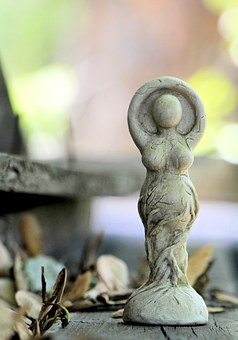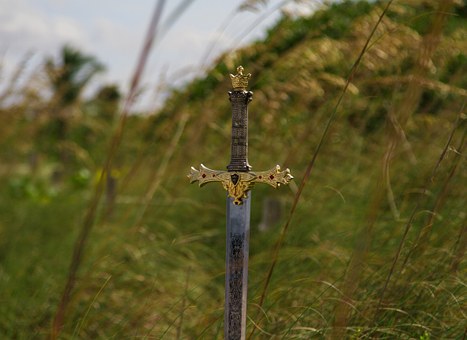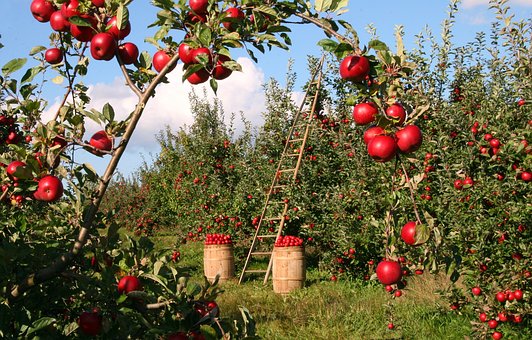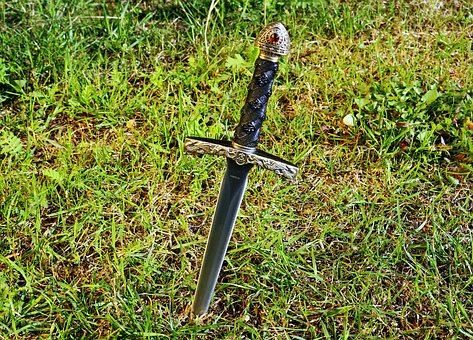Primordial goddess. Egyptian. One of the eight deities of the OGDOAD, representing chaos, she is coupled with the god HEH and appears in anthropomorphic form but with the head of a snake.
Tag: with the
Asˇnan
Vegetation goddess. Mesopotamian (Sumerian and Babylonian-Akkadian). Minor deity probably known to the Sumerians from circa 3500 BC or earlier. She is concerned with the abundance of grain in the fields, sent as its protectress by the gods ENLIL and ENKI. According to creation accounts, she and the cattle god LAHAR were first intended to serve the needs of the Annunaki, the celestial children of AN, but when the heavenly creatures were found unable to make use of their products, humankind was created to provide an outlet for their services.
Atargatis
Mother goddess. Northern Syrian. She enjoyed major cults at Khirbet Tannur, where she is depicted as the vegetation goddess in nine separate variations, and at Khirbet Brak, where she is associated with dolphins. She often carries a cornucopia linking her with the goddess TYCHE (fortune) and may commonly be flanked by lions. She sometimes carries a rudder or wears the mural crown of a city guardian. There are hints of sky affinities in some depictions, with a sign of the zodiac or a nimbus-like veil.
Apedemak
War god. Sudanese (Meroe). An Egyptianized deity, his main sanctuary was contained in a vast religious complex and center of pilgrimage at Musawwarat-es-Sufra, north of the sixth Nile cataract. Sacred animals include cattle and the African elephant. Depicted with the head of a lion and a human body, holding a scepter embellished with a seated lion at the tip.
CLEAR QUARTZ
CRYSTAL – CLEAR QUARTZ
My one is a clear terminated structure (male).
Astrological sign for all.
Known as “Ice of Eternity.” All-around healer and amplifier. Capable of dispersing white light into the seven spectral colors. Aligns one’s consciousness with the electromagnetic forces of the universe, helping each of us find our own inner light that connects us with the One Light. Magnifiers of psychic and healing energies. Used to help focus and amplify one’s thoughts or intentions.
Mabon Background
Background:
Mabon marks the Second Harvest, the end of the grain harvest (which begun at Lughnasadh), and rests on the Autumn Equinox. The Equinox mirrors dwindling of life (and eventual progression to rebirth), as well as the struggle for balance; day and night are equal for a single day. The pagans of old didn’t have the ability to determine astrological positions as we do today. The Europeans, therefore, celebrated this Sabbat on September 25th; actually. The Celts marked their days from sundown to sundown, so the Mabon celebration actually started on the sundown of our September 24th. Today, with the help of our technology, we can calculate the exact day of the Equinox; the date when the sun enters the sign of Libra, the Balanced Scales, which appropriately fits the Equinox. In the Wiccan tradition we celebrate from sundown of the 21st to sundown of the 22nd. September 25th is a medieval holiday which the Church Christianized under the label of “Michaelmas,” a feast in honor of the Archangel Michael. It is thought that the Roman Catholic Church at some point considered assigning the quarter dates to the four Archangels, since they had assigned the cross quarters to the four gospel-writers. Making the Vernel Equinox a holiday called “Gabrielmas” was taken into consideration in honor of the angel Gabriel’s announcement to Mary on Lady Day. This Sabbat can also be known as: the Second Harvest Festival, Feast of Avalon, Cornucopia, Wine Harvest, the Fall Equinox, Harvest Home, the Autumnal (or Autumn) Equinox, Festival of Dionysus, Alban Elfed (Caledonii, Druidic), Winter Finding (Teutonic), or Equinozio di Autunno (Strega). The full moon closest to the Autumn Equinox is called the Harvest Moon, and farmers would harvest their corps by this moonlight as part of the Second Harvest celebration.
Ambrosius Aurelianus
by Brian Edward Rise
The sole fifth century Briton named by Gildas (author of 6th century De Excidio Britanniae) and one of the few from any time that he finds praiseworthy. Called a Roman, probably to denote a pro-imperial view, his parents, people of some preeminence, were killed in the Saxon wasting. After the Saxons ceased marauding and withdrew to their settlements, Ambrosius launched a counteroffensive campaign, possibly around 460, that brought about a period of fluctuating warfare climaxing with the British victory at the siege of Mount Badon (Badon Hill) about 500, bringing a more or less stable peace.
Bedivere, Sir
by Brian Edward Rise
One of Arthur’s primary companions in Welsh literature, second in prominence only to Cai (Kay). His name is mentioned in poetry, Culhwch and Olwen, the triads and the life of St. Cadoc. He is described as valiant, skilled with a spear and handsome. Geoffrey changes his name to the more familiar spelling and brings him into full medieval knighthood. He is made cupbearer to the King and governor of Normandy. Along with Arthur and Kay, he mounts an assault on a giant inhabiting Mont St. Michel. After falling in combat with the Romans he is buried in Bayeux, a city founded by an ancestor with the same name, according to Geoffrey.








